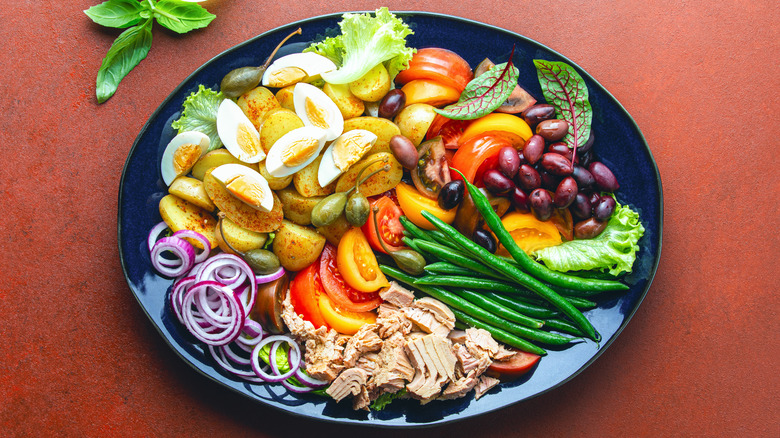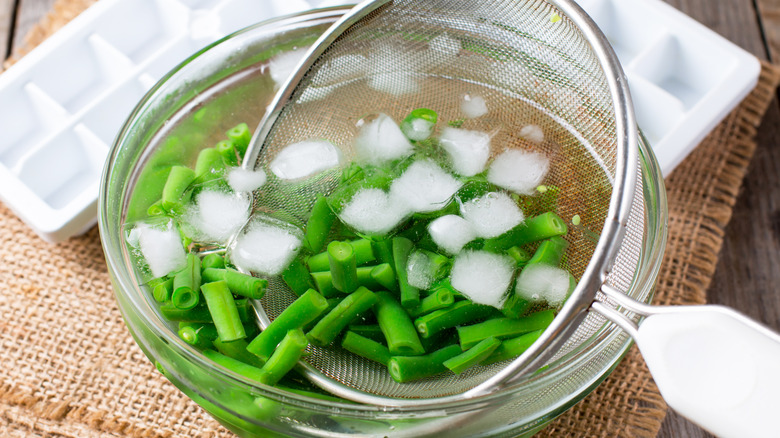For The Best Salad, There's One Cooking Method You Need
We know what you're thinking. Cooking? A salad? Being that salads are more commonly associated with raw, crisp freshness, that double take was justified. And no, we aren't even talking about the pasta or potato varieties that do typically have boiled bases among their vast and varied other ingredients. We're referring to the more likely kind, replete with leafy greens, garden tomatoes, snappy cucumbers, and your own favorite mix-ins. It's just that, depending on the type of salad you're tossing up, some of those veggies are just going to be better off blanched.
Blanching simply briefly blasts an ingredient with boiling water, then typically follows with freezing water. The most time-consuming part is just getting the first bath to temp, but it's a passive step. There was a time when we'd make salad Niçoise, for example, with totally raw green beans. Being that both tinned tuna and canned potatoes perform so perfectly in the French favorite, it didn't just seem necessary to cook this one item out of what could be half a dozen or more. But the couple of extra minutes it takes to blanch green or long beans for Niçoise or papaya salad, asparagus tips for a beet and goat cheese mélange, and ramps to add to everything whenever they're in season, are worth more than the time and effort expended. Blanching vegetables for salad can make their color even more vibrant, their texture more dynamic, and sometimes even let you fine tune their flavors.
Blanch out to branch out
Those blanched green beans are a classic of the genre. For about a pound, you'll boil a medium-sized pot of salted water. While it heats up, wash and trim the beans and drop the contents of a whole ice cube tray into a big bowl of cold water. (You can adjust accordingly for smaller portions.) Once the pot gets rolling, drop the beans in for a couple of minutes and remove with tongs into the ice bath to chill. The beans will look brighter (boiling brings out the hue-inducing chlorophyll) and they'll be just a little tender. And your salad will look and taste way more polished.
Now, we know that blanching leaves you with a few more dishes to clean. But it's kind of a trade off. After washing, you really must fully dry your vegetables for the best salad. It's one reason that salads actually do usually taste better in restaurants. If you count a salad spinner among your best single-purpose kitchen tools, it will certainly help. But, unless you can spin everything at once (which you can't!) that's going to be an extra step anyway. Even cookery merits aside, tossing the veggies back into water, instead, leaves you with one less thing to painstakingly dry. They actually shake off the moisture more easily after cooking in our experience. It may not make your salad prep more efficient, but neither is it a huge swing, for such a notable reward.

